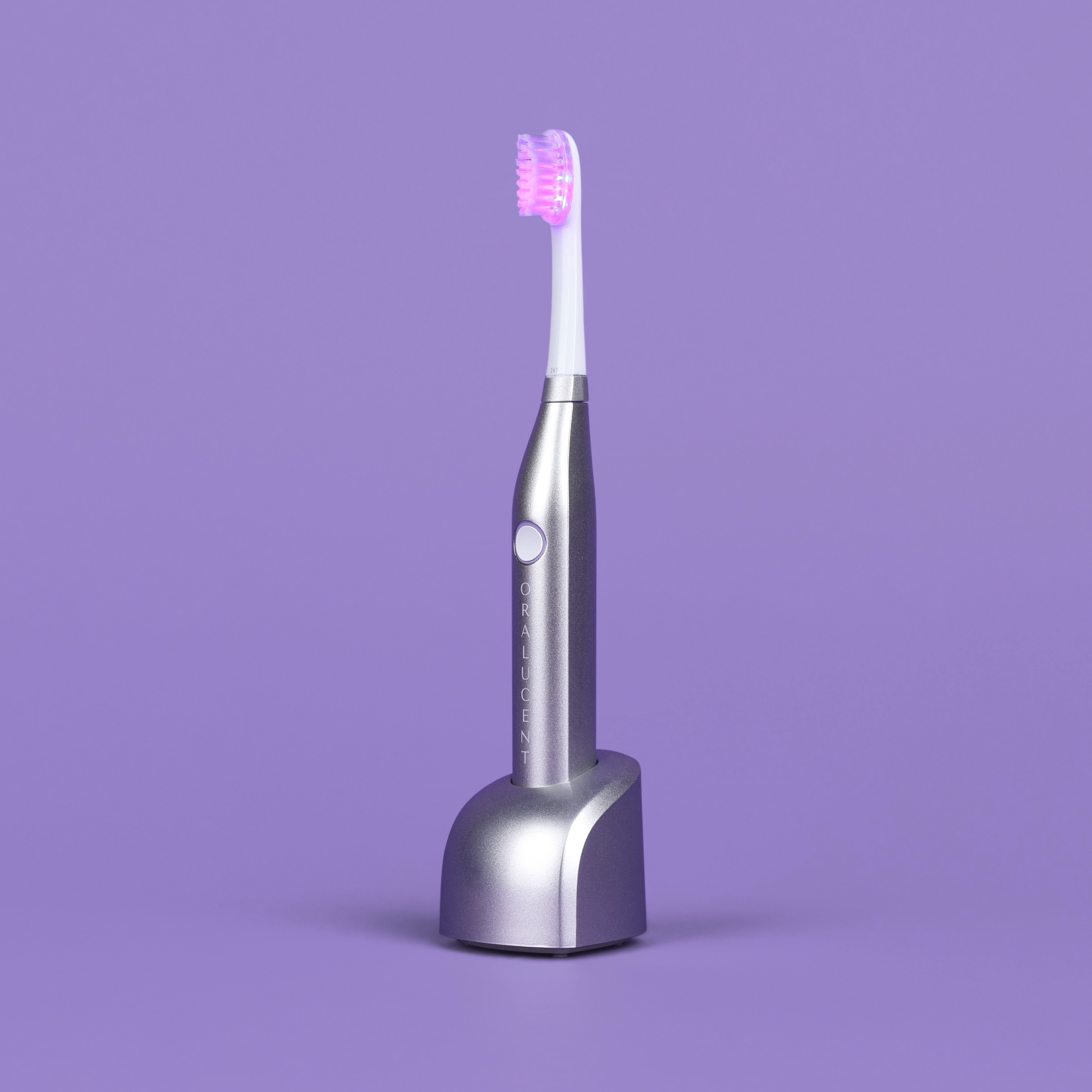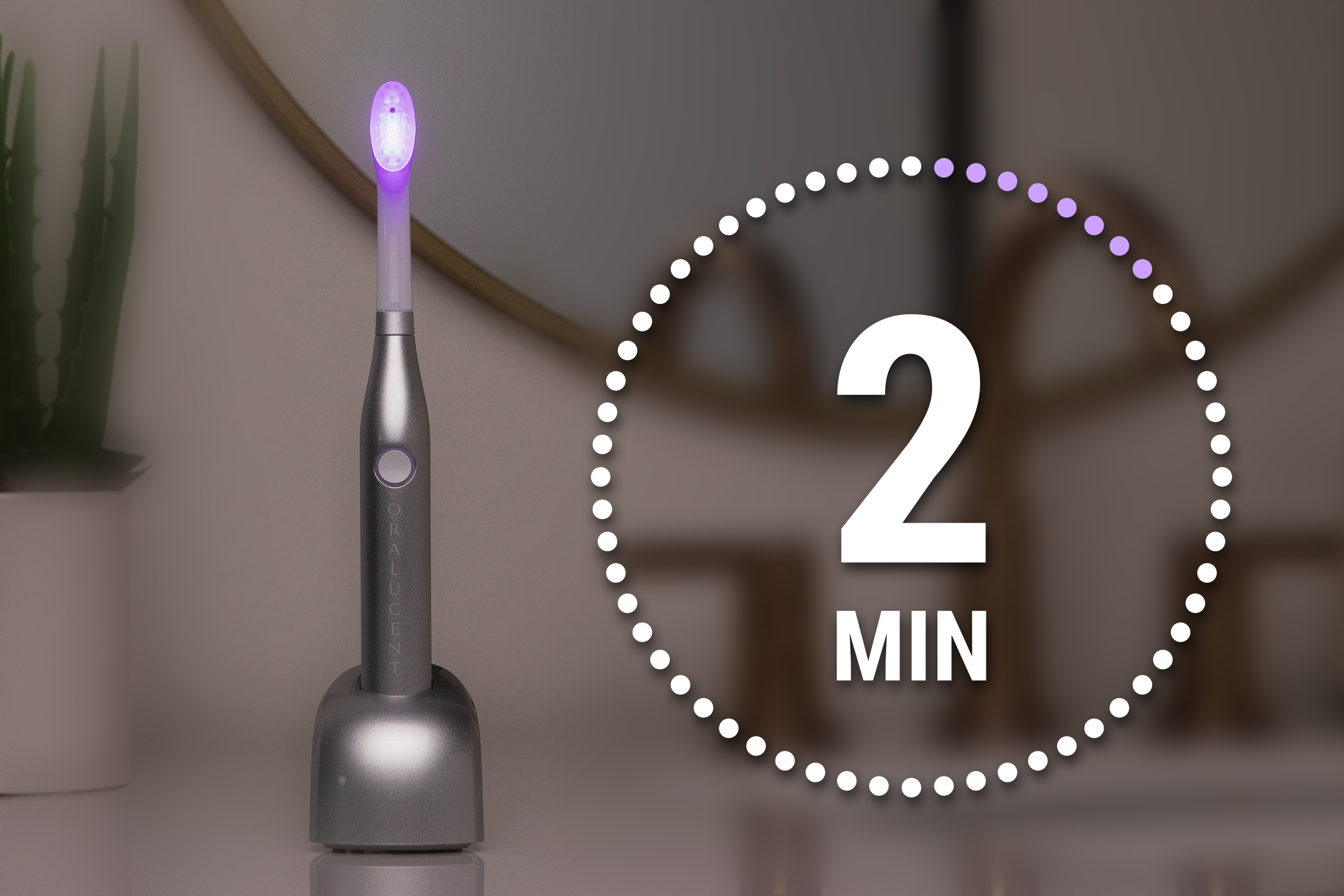When you think about your oral health, what do you think about?
Take a minute and think about it...
Did you think about how painful your last cleaning was, your teeth aren’t white enough, that filling that you lost, a painful root canal, or your red swollen bleeding gums?
You probably don’t think about how your overall wellness and health is directly linked to your gum health. A growing body of evidence points to the links between gum disease and major systemic diseases. This evidence gives us greater
reason to take care of our gums.
Gum disease, or periodontal disease, affects more than 47.2% of adults over 30-years of age and that increases to 60% as we age up to 65 (National Institute of Health, 2024, National Institute of Dental and Craniofacial Research. (2024), National Institute of Health-Medline Magazine. (2024)). It has been associated with an increased risk of serious systemic diseases like diabetes, heart disease, Alzheimer's, and certain cancers.
In addition to the physical toll, treating advanced gum disease is painful and costly, often requiring invasive procedures. These procedures can cost between $500 and $10,000.
But there is good news for you and your family.
With proper nutrition, hydration, oral hygiene habits, regular teeth cleanings and dentist visits, and innovations like oral light therapy with a red light and blue light therapy sonic toothbrush, such as the Oralucent Pro Edition (Click to Buy-now), you can reduce your risk of gum disease naturally and improve gum health. It has been shown that healthier gums may lower your risk of associated systemic diseases. Let's explore the oral-systemic link and the simple steps you can take to protect your gums and your overall health.
The Oral-Systemic Link: How Gum Disease Impacts Your Overall Health
Numerous studies have shown a bidirectional relationship between periodontal disease and systemic diseases (Nagpal et al., 2015). This means that not only may gum disease influence the development and progression of certain diseases, but these diseases may also increase the risk of developing gum problems. Here are some of the key connections:
Diabetes
Gum disease can make blood sugar control more difficult, and people with diabetes are more susceptible to periodontal infections. Treating gum disease may help improve blood sugar control (Preshaw et al., 2012).
Cardiovascular Disease
The inflammation associated with gum disease may increase the risk of heart disease, clogged arteries, and stroke. Bacteria from the mouth can enter the bloodstream, contributing to plaque buildup in the arteries (Teles & Wang, 2011).
Alzheimer's Disease
Porphyromonas gingivalis, a bacteria involved in gum disease, has been found in the brains of Alzheimer's patients, and inflammation from periodontal disease may exacerbate Alzheimer's (Dominy et al., 2019).
Cancer
Gum disease has been linked to an increased risk of kidney, pancreatic, and blood cancers, likely due to systemic inflammation (Michaud et al., 2008; Maisonneuve et al., 2017; Dizdar et al., 2017).
Preventing and treating gum disease not only reduces the need for painful and inconvenient dental and periodontal procedures but may also lower your risk of these serious health problems, potentially reducing medical costs and improving your quality of life and healthful longevity. While additional research is needed, the emerging data suggests that preventing gum disease and reducing pathogenic bacteria in the mouth are an important component of overall wellness and healthful longevity.
The Painful Price of Unhealthy Gums
Beyond the systemic health risks, impacts on overall wellness, reductions in healthful longevity, the direct costs of treating periodontitis are staggering:
- $54 billion spent annually in the U.S. on treating gum disease (Loesche, 2007)
- An average cost of $2,100 per patient for non-surgical treatment
- Surgical treatment ranging from $500 to over $10,000 per area
In advanced cases, invasive procedures like scaling, root planing, gum grafting, and bone regeneration surgery may be required. Recovery can be painful and lengthy. However, you can prevent this expensive ordeal by understanding how gum disease progresses and taking preventive action.
How Gum Disease Progresses
Gum disease starts when plaque, a sticky film of bacteria, builds up on teeth and hardens into tartar. In the early stage of gingivitis, gums become red, swollen, and bleed easily. With proper oral hygiene, gingivitis is reversible. However, untreated gingivitis advances to periodontitis. The gums pull away from the teeth, forming infected pockets. Bacterial toxins and the immune response break down tissue and bone (Genco & Borgnakke, 2013), and teeth may eventually loosen and fall out.
Several factors can accelerate gum disease:
- Poor oral hygiene
- Smoking
- Diabetes
- Stress
- Genetic susceptibility
A holistic approach addressing nutrition, hydration, and oral hygiene is key to preventing these painful outcomes and systemic complications (Dawes, 2008).
The Critical Role of Nutrition and Hydration
What you eat and drink significantly impacts your gum health. Certain nutrients are essential for strong gums and teeth:
- Vitamin C may maintain connective tissue and reduces inflammation
- Vitamin D may decrease susceptibility to gum disease
- Calcium supports strong bones and teeth
- Omega-3 fatty acids have demonstrated anti-inflammatory properties
Eating plenty of leafy greens, citrus fruits, fatty fish, and low-fat dairy can boost gum health. Drinking water is also important for staying well-hydrated, stimulating saliva flow to neutralize acids, washing away food particles, and keeping gums moist.
Brush Up Your Oral Care Routine
While professional cleanings are essential for removing tartar, your daily habits are vital for preventing gum disease. Brushing twice a day with a toothbrush like the Oralucent Pro Edition, flossing daily, and using an antimicrobial mouthwash help control plaque and keep gums healthy (Claydon, 2008).
Exciting research illustrates that using red-light and blue-light therapy for oral care may provide additional gum health benefits. Studies suggest dental plaque and periodontal pathogens are susceptible to blue-light, likely due to activation of bacterial porphyrins leading to cell death (Feuerstein et al., 2005; Soukos et al., 2005). Research also indicates visible blue light has phototoxic effects on key pathogens like Porphyromonas gingivalis, especially in the planktonic state (Song et al., 2013).
Red-light therapy may be effective in aiding gum health because the light penetrates the oral tissues, promoting healing at a cellular level. Healing occurs specifically in the mitochondria (the powerhouse of cells), which respond to the red-light. This light can stimulate several tissue responses, including repair, regrowth, and increased blood flow (Pagan, C. N., & Rosenbaum, L., 2024). A NASA study supports this hypothesis demonstrating that red-light therapy promotes wound healing (Whelan, H. T., Smits, R. L., Jr, Buchman, E. V., et al., 2001). While more research is needed, a red- and blue-light therapy sonic toothbrush may be a powerful weapon in your home oral care arsenal against pathogenic bacteria, plaque, and gum disease.
New Light on the Horizon: Red and Blue Light Therapy
Emerging data and innovative products such as the Oralucent Pro Edition are shedding new light on the prevention and management of gum disease. Light-based oral therapy at home will likely work best in addition to treatments and preventative measures recommended by your dental professionals. Light therapy’s potential to suppress pathogens with less invasiveness and risk of resistance naturally is exciting. As new research emerges, light has become a powerful tool for potentially reducing the risk of gum disease.
Gum disease is not just a threat to your oral health but to your overall health and well-being. Its connections to serious systemic diseases and high treatment costs make prevention all the more critical. But by embracing a holistic approach with proper nutrition, hydration, oral hygiene, and new tools such as the Oralucent Pro Edition red- and blue-light therapy sonic toothbrush, you may reduce the risk of gum disease naturally and potentially lower your risk of associated diseases.
While diligent home care is foundational, be sure to see your dentist and hygienist regularly for check-ups and early intervention if the disease develops. And stay tuned for further advances in light-based therapies that may redefine periodontal care. Taking these simple steps today can lead to better oral health, improved overall health, a brighter smile, and potentially a longer, healthier life. Your whole body will thank you.
__
If you want to take a deeper look at light therapy and gum disease check out our post, “The Power of Red-Light Therapy: A Potential Breakthrough for Gum Health and Gum Recession Prevention”. We discuss the different stages of gum disease in more detail with strategies for prevention and treatment.
References
- Center for Disease Control. (2024). About periodontal (gum) disease. https://www.cdc.gov/oral-health/about/gum-periodontal-disease.html
- Claydon, N. C. A. (2008). Current concepts in toothbrushing and interdental cleaning. Periodontology 2000, 48(1), 10–22. https://doi.org/10.1111/j.1600-0757.2008.00273.x
- Dawes, C. (2008). Salivary flow patterns and the health of hard and soft oral tissues. The Journal of the American Dental Association, 139, 18S-24S. https://doi.org/10.14219/jada.archive.2008.0351
- Dizdar, O., Hayran, M., Guven, D. C., Yılmaz, T. B., Taheri, S., Akman, A. C., & Bilgin, E. (2017). Increased cancer risk in patients with periodontitis. Current Medical Research and Opinion, 33(12), 2195–2200. https://doi.org/10.1080/03007995.2017.1354829
- Dominy, S. S., Lynch, C., Ermini, F., Benedyk, M., Marczyk, A., Konradi, A., Nguyen, M., Haditsch, U., Raha, D., Griffin, C., Holsinger, L. J., Arastu-Kapur, S., Kaba, S., Lee, A., Ryder, M. I., Potempa, B., Mydel, P., Hellvard, A., Adamowicz, K., … Potempa, J. (2019). Porphyromonas gingivalis in Alzheimer's disease brains: Evidence for disease causation and treatment with small-molecule inhibitors. Science Advances, 5(1), eaau3333. https://doi.org/10.1126/sciadv.aau3333
- Feuerstein, O., Ginsburg, I., Dayan, E., Veler, D., & Weiss, E. I. (2005). Mechanism of visible light phototoxicity on Porphyromonas gingivalis and Fusobacterium nucleatum. Photochemistry and Photobiology, 81(5), 1186–1189. https://doi.org/10.1562/2005-04-06-ra-477
- Genco, R. J., & Borgnakke, W. S. (2013). Risk factors for periodontal disease. Periodontology 2000, 62(1), 59–94. https://doi.org/10.1111/j.1600-0757.2012.00457.x
- Loesche, W. J. (2007). Dental caries and periodontitis: contrasting two infections that have medical implications. Infectious Disease Clinics of North America, 21(2), 477–502, vii. https://doi.org/10.1016/j.idc.2007.03.006
- Maisonneuve, P., Amar, S., & Lowenfels, A. B. (2017). Periodontal disease, edentulism, and pancreatic cancer: a meta-analysis. Annals of Oncology, 28(5), 985–995. https://doi.org/10.1093/annonc/mdx019
- Michaud, D. S., Liu, Y., Meyer, M., Giovannucci, E., & Joshipura, K. (2008). Periodontal disease, tooth loss, and cancer risk in male health professionals: a prospective cohort study. The Lancet. Oncology, 9(6), 550–558. https://doi.org/10.1016/S1470-2045(08)70106-2
- Nagpal, R., Yamashiro, Y., & Izumi, Y. (2015). The Two-Way Association of Periodontal Infection with Systemic Disorders: An Overview. Mediators of Inflammation, 2015, 793898. https://pubmed.ncbi.nlm.nih.gov/26339142/
- Preshaw, P. M., Alba, A. L., Herrera, D., Jepsen, S., Konstantinidis, A., Makrilakis, K., & Taylor, R. (2012). Periodontitis and diabetes: a two-way relationship. Diabetologia, 55(1), 21–31. https://doi.org/10.1007/s00125-011-2342-y
- Song, H.-H. W., Lee, J.-K., Um, H.-S., Chang, B.-S., Lee, S.-Y., & Lee, M.-K. (2013). Phototoxic effect of blue light on the planktonic and biofilm state of anaerobic periodontal pathogens. Journal of Periodontal & Implant Science, 43(2), 72. https://doi.org/10.5051/jpis.2013.43.2.72
- Soukos, N. S., Som, S., Abernethy, A. D., Ruggiero, K., Dunham, J., Lee, C., Doukas, A. G., & Goodson, J. M. (2005). Phototargeting Oral Black-Pigmented Bacteria. Antimicrobial Agents and Chemotherapy, 49(4), 1391–1396. https://doi.org/10.1128/aac.49.4.1391-1396.2005
- Teles, R., & Wang, C.-Y. (2011). Mechanisms involved in the association between periodontal diseases and cardiovascular disease. Oral Diseases, 17(5), 450–461. https://doi.org/10.1
- Pagan, C. N., & Rosenbaum, L. (2024). Red light therapy: What is it? WebMD. Retrieved from https://www.webmd.com/skin-problems-and-treatments/red-light-therapy
- Whelan, H. T., Smits, R. L., Jr, Buchman, E. V., et al. (2001). Effect of NASA light-emitting diode irradiation on wound healing. Journal of clinical laser medicine & surgery, 19(6), 305–314. https://doi.org/10.1089/104454701753342758
- (2022). NASA research illuminates medical uses of light. Retrieved from https://spinoff.nasa.gov/NASA-Research-Illuminates-Medical-Uses-of-Light
- National Institute of Dental and Craniofacial Research. (2024). Periodontal (Gum) Disease. Retrieved from https://www.nidcr.nih.gov/health-info/gum-disease#causes
- National Institute of Health-Medline Magazine. (2024) Gum Disease: By the Numbers. Retrieved from https://magazine.medlineplus.gov/article/gum-disease-by-the-numbers







